
Amos Alonzo Stagg was an American athlete and college coach in multiple sports, primarily American football. He served as the head football coach at the International YMCA Training School (1890–1891), the University of Chicago (1892–1932), and the College of the Pacific (1933–1946), compiling a career college football record of 314–199–35 (.605). His undefeated Chicago Maroons teams of 1905 and 1913 were recognized as national champions. He was also the head basketball coach for one season at Chicago (1920–1921), and the Maroons' head baseball coach for twenty seasons.

Fielding Harris Yost was an American college football player, coach and athletics administrator. He served as the head football coach at: Ohio Wesleyan University, the University of Nebraska, the University of Kansas, Stanford University, San Jose State University, and the University of Michigan, compiling a coaching career record of 198–35–12. During his 25 seasons as the head football coach at Ann Arbor, Yost's Michigan Wolverines won six national championships, captured ten Big Ten Conference titles, and amassed a record of 165–29–10.

John William Heisman was a player and coach of American football, baseball, and basketball, as well as a sportswriter and actor. He served as the head football coach at Oberlin College, Buchtel College, Auburn University, Clemson University, Georgia Tech, the University of Pennsylvania, Washington & Jefferson College, and Rice University, compiling a career college football record of 186–70–18.
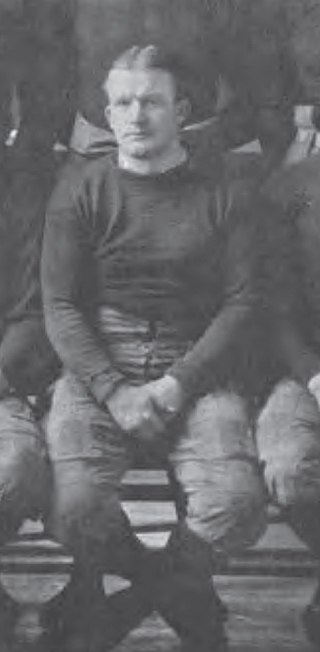
Percy Wilfred "Red" Griffiths was an American football player and coach and politician. He played college football at Pennsylvania State College—now known as Pennsylvania State University and professionally for one season in the National Football League (NFL) with the Canton Bulldogs. Griffiths was the head football coach at Marietta College in Marietta, Ohio from 1921 to 1926 and Dickinson College in Carlisle, Pennsylvania from 1929 to 1930, compiling a career college football coaching record of 16–41–10. He was the mayor of Marietta, Ohio from 1938 and 1939 and served three terms in the United States House of Representatives, representing Ohio's 15th congressional district from 1943 to 1949.

Charles Pelton Hutchins was an American college football and college baseball coach and athletics administrator. He served as the head football coach at Dickinson College (1902–1903), Syracuse University (1904–1905), and University of Wisconsin–Madison (1906–1907), compiling a career college football coaching record of 33–17–1. From 1904 to 1905, he coached at Syracuse, tallying a 14–6 record. From 1906 to 1907, he coached at Wisconsin, where he compiled an 8–1–1 record. Hutchins was also the athletic director at Indiana University Bloomington from 1911 to 1913.
Carl Sheldon "Cap" Williams was an American football player, coach, and ophthalmologist. He played college football at Oberlin College and the University of Pennsylvania during the 1890s. He returned to Penn and served as the head football coach there from 1902 to 1907, compiling a record of 60–10–4. His Penn Quakers teams of 1904 and 1907 have been recognized as national champions. Williams later practiced ophthalmology for many years in Philadelphia.

Garfield Wilson Weede was an American football, basketball, and track and field coach and athletic director. He was one of the first college coaches to "break the color line" and allow racial integration among his players.
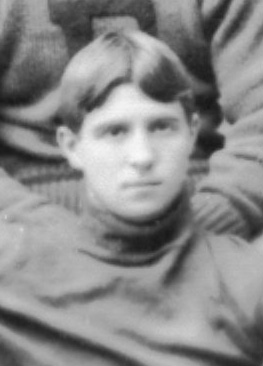
Samuel Alexander Boyle Jr. was an American college football player and coach. He served as the head football coach at the Virginia Military Institute (1898–1899), Pennsylvania State University (1899), and Dickinson College (1900), compiling a career coaching record of 14–12–1.
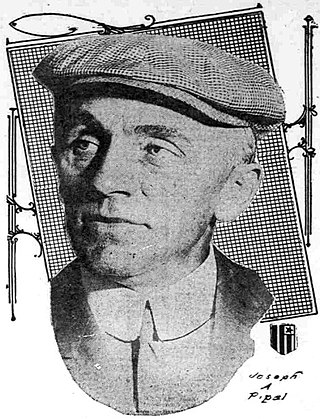
Joseph Amos Pipal was an American football, basketball, and track and field coach. He served as the head football coach at Doane College (1902), Huron University in 1905, Dickinson College (1907), the University of South Dakota (1910), Occidental College, and Oregon State University (1916–1917), compiling a career college football record of 50–35–3. Pipal was credited with devising lateral pass and mud cleats for football shoes and in 1934 wrote a book titled The lateral pass technique and strategy.
Francis Arthur "Mother" Dunn, was an American football player as well as head football coach for at Dickinson College in Carlisle, Pennsylvania. While coaching at Dickinson he also played professional football for the Canton Bulldogs. After coaching he served as a corporate attorney in the steel industry until he retired in 1969

Benjamin Russell Murphy was an American athlete, coach, and athletics administrator during the early 20th century. A graduate of the University of Pennsylvania, he coached at numerous schools in several sports including football, basketball and track. Murphy was the first basketball coach at Johns Hopkins University. He is also one of the few college football coaches to resign during the middle of his first year of coaching at a school.
Joseph H. McCormick was an American football, basketball, and baseball coach. He served as the head football at Dickinson College from 1931 to 1934 and at Mount St. Mary's University from 1937 to 1938, compiling a career college football record of 15–24–7. McCormick was also the head basketball coach at Mount St. Mary's for the 1937–38 season, tallying a 12–2 mark. McCormick graduated from Colby College in 1915.
Edward F. Sweeney was an American football coach. He served as the head football coach at Dickinson College from 1985 to 1992, Colgate University from 1993 to 1995, Frostburg State University from 1996 to 1999, and Mount Ida College from 2000 to 2007, compiling a career college football coaching record of 114–110–4.

The 1906 college football season was the first in which the forward pass was permitted. Although there was no clear cut national championship, there were two teams that had won all nine of their games as the 1906 season drew to a close, the Princeton Tigers and the Yale Bulldogs, and on November 17, 1906, they played to a 0–0 tie. St. Louis University finished at 11–0–0. The Helms Athletic Foundation, founded in 1936, declared retroactively that Princeton had been the best college football team of 1906. Other selectors recognized Yale as the national champions for 1906.
Alured Chaffee "Slim" Ransom was an American athletics coach and sports educator who helped develop physical education programs in Afghanistan. In the United States he was a college football and basketball coach, coaching from 1941 until 1954. His career football coaching record was 30–41–2 with a winning percentage of .411. He also spent some time coaching and as an athletic director at the high school level.
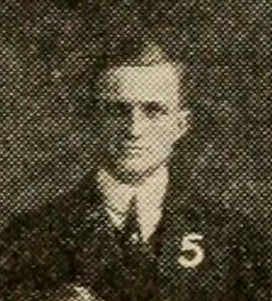
Simon Francis Pauxtis was an American professional baseball player and college football coach. He also served in the Electoral College for the 1916 Presidential Election for the state of Pennsylvania.
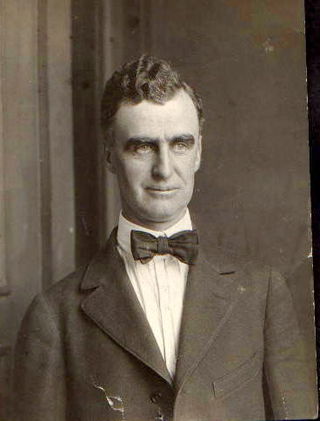
James Newton Ashmore was an American football, basketball and baseball coach and college athletics administrator. He served as the head football coach at the Washington Agricultural College and School of Science—now known as Washington State University—(1903), Millikin University, Western Maryland College—now known as McDaniel College–(1907–1908), and DePauw University (1922–1924), compiling a career college football record of 61–46–9. Ashmore was also the head basketball coach at Washington Agricultural (1904–1905), Millikin, the University of Colorado at Boulder (1914–1917), the University of Iowa (1920–1922), DePauw (1923–1924) and the University of North Carolina at Chapel Hill (1926–1931), tallying a career college basketball mark of 178–117. In addition, he was the head baseball coach at Washington Agricultural (1904), Millikin, Colorado, (1915–1917), Iowa (1920–1922), DePauw (1923–1924) and North Carolina (1927–1931).

John Spencer "Big Joe" Curtis was an American football player and coach. While playing for the University of Michigan, he was selected as a first-team All-Western tackle three consecutive years from 1904 to 1906 and as an All-American in 1904 and 1905. In his four seasons as the starting left tackle for the Michigan Wolverines, the team compiled a record of 37–2–1, won two national championships and outscored opponents by a combined total of 1,699 to 60. Curtis later served as the head football coach at Tulane University from 1907 to 1908 and at the Colorado School of Mines in 1909.

The History of Michigan Wolverines football in the Yost era covers the period from the hiring of Fielding H. Yost as head coach in 1901 through Yost's firing of Tad Wieman as head coach after the 1928 season. The era includes the brief head coaching tenures of George Little and Tad Wieman. Wieman was head coach during the 1927 and 1928 seasons but contended that he had never truly been allowed to take control of the team with Yost remaining as an assistant coach and athletic director.
The Swarthmore football team represented Swarthmore College in American football. Swarthmore was the 15th oldest college football program in the United States. The football program started in 1878 with a game against Penn. The program played no more than two games per year until 1885 when it played a six-game schedule. There was no team in 1880 and 1881. The team did not hire a coach until 1888 when Jacob K. Shell began his 11-year tenure as head coach. This article covers the program's early years prior to the hiring of Shell as the school's first head football coach.














